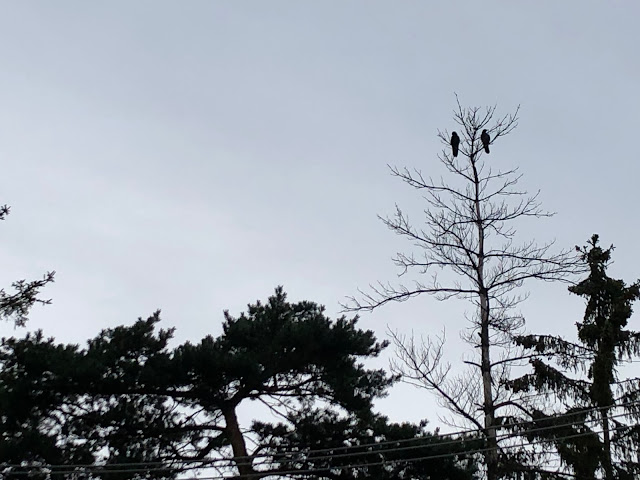Monday I finally did something I've been meaning to do for months — walk through the Chicago Botanic Garden with its president, talking about the artwork installed for the 50th anniversary. That'll run Monday in the Sun-Times.
During our walk, I mentioned this column, about hanging out with spider expert Jim Steffen, and thought I'd share it here. That word in the third paragraph, "epigyne," means exactly what it seems to: the female sex organ of an arachnid. A reminder that the language, like nature itself, can be wonderfully specific. Steffen was an emeritus senior ecologist at the garden until his retirement last year.
Determining the sex of a spider is not so very much different than determining the sex of a human baby: You flip it over and check out the equipment.
Unlike with the baby however, with a spider, you need a microscope to get a good look at its sex organs, which are both very small and very complicated and — also unlike the baby — you really want the spider to be dead.
“You can imagine, if you had a live spider and you flipped it over, it’s not going to sit there,” said Jim Steffen, an ecologist at the Chicago Botanic Garden in Glencoe, as I peered into a microscope and admired the dainty epigyne of a crab spider collected in the Mary Mix McDonald Woods, a 100-acre oak forest within the Botanic Garden, which for the past 23 years Steffen has been nudging back toward its pristine state.
Nature is interconnected, so caring about trees — the oaks have been here 10,000 years while the ash, the Norway maples and the other riff-raff less than 200 — led Steffen to focus on leaf litter, the fallen leaves and debris on the ground under the trees.
“I was interested in what was happening with the leaf litter,” he said, “because what we have discovered with woodland restoration, as invasive species invade the woodland the litter layer degrades.”
And by figuring out what’s happening with the spiders in the leaf litter, Steffen gets insight into the ecosystem as a whole.
Invasive species, both plants and animals, are hardy imports from around the globe that have a tendency to crowd out local flora and fauna. Some have suitably awful names — leafy spurge, poison hemlock, goutweed, hairy fireweed — others do not: baby’s breath, Queen Anne’s lace, wild strawberry.
And buckthorn. Longtime readers will recall my endless War Against Buckthorn. I smiled, encountering my old nemesis in the Botanic Garden, like Sherlock Holmes detecting the hand of Professor Moriarty in a particularly sticky business.
Somewhat like a character out of Conan Doyle himself, Steffen is trim, 60, with a neat white mustache. He lives in Winthrop Harbor. Perhaps all you need to know about his personal life is that when I asked him what he does as a hobby, he answered, “I collect seeds on the weekend.” He also gardens.
Learning that the spiders are killed in order to study them gave me pause. I feel bad when called upon to kill a spider. Didn’t Steffen, as a man devoted to nature, also feel bad?
“No,” he said. “If I took you for a walk through this part of the woods here, you would probably kill several hundred thousand insects — springtails and spiders — walking. Every time you put your foot down you’re stepping on something.”
Somehow I reached the age of 50 without ever hearing the word “springtail” — it’s a tiny (¼-inch long or less) primitive insect-like thing with a curled tail used to hop away from danger. We looked at a few under the microscope — a springtail looks like a brown crumb with personality.
“It’s a group of organisms not looked at too closely,” Steffen said, noting that a volunteer, studying creatures that showed up in the spider traps, found about half a dozen new springtails that science had yet to give names.
We ended up at the Botanic Garden’s ecology lab, and I was struck by the contrast between the wild disorder of the green, sun-dappled woods, with hardy oaks and nefarious buckthorn, and this cool, pristine white room with its gray counters, sleek microscopes, rack of Kimax lab glassware, orderly rows of metal boxes of slides and spider-filled little vials. On the bookshelf, apropos titles: Mushrooms Demystified by David Arora, All About Weeds by Edward Rollin Spencer and How to Know the Grasshoppers, Crickets, Cockroaches and Their Allies by Jacques Hefler.
After two hours I was just getting started, but Steffen began sorting slides, and I realized I was keeping him from important work. Besides, I’d already collected enough information for three columns (I haven’t even talked about the sex lives of spiders. Male spiders engage in foreplay and treat their beloved to dinner — a male will wrap a fly in silk and present it to the female, though, unlike men, or at least unlike most men, he will then do the deed while she’s still eating).
Nor have I touched on spiders’ solitary quality, nor their venom — almost all spiders are poisonous, though only a few have poison in enough quantity or strength that can harm humans. Nor have I mentioned our outsize fear of spiders, which are everywhere.
“You’re never more than a meter away from a spider, wherever you are,” said Steffen.
Whether that’s good or not is up to you.
—Originally published in the Sun-Times, May 13, 2011.











